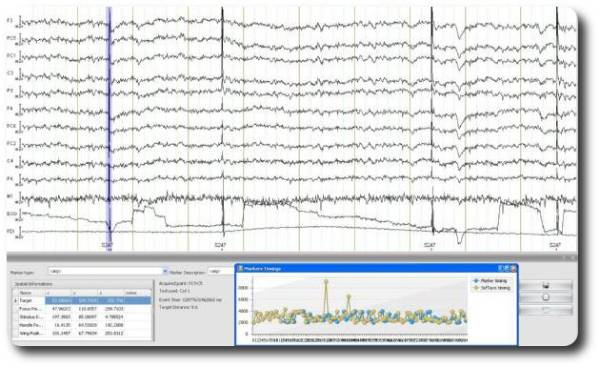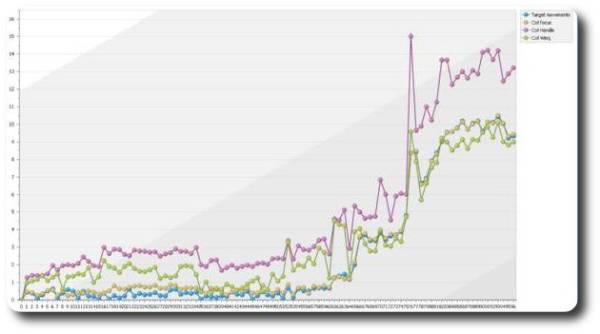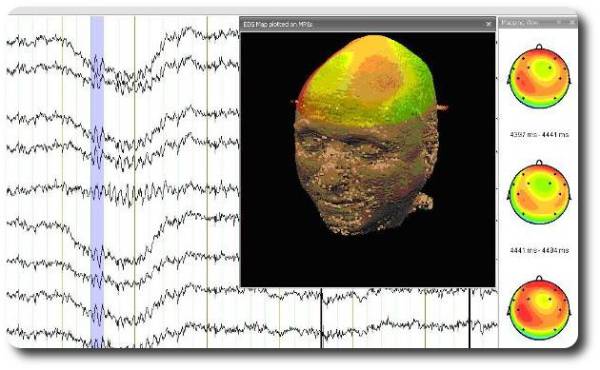
The SofTaxic Optic neuronavigation system has a proper interface for the recording of EEG signals during TMS sessions guided by neuronavigation. For every stimulus delivered by the magnetic stimulator (the Softaxic system supports all the models of magnetic stimulator that can deliver a trigger signal TTL 0-5 V to it), the spatial position of the stimulation coil(s) is recorded. These data are recorded in a proper session file, which contains the list of the coil positions in relation to the subject’s head, together with the coil-target distance during stimulation. This information can be imported directly in the Analizer 2.0 software, developed by Brainproducts with a suitable AddIn for Softaxic.
The result of such integration opens new ways for the analysis of EEG-TMS data:
It is possible to record the stability of the coil during stimulation.
For the TEP (TMS Evoked Potentials) study, it is possible to discard stimuli on the basis of spatial criteria: that is to say, erase from the final average the stimuli for which the coil went beyond a certain threshold, as if they were artefacts.
It is possible to generate and display maps of the electric EEG potentials directly on the data coming from the subject’s MRI.

Example of EEG trace with the spatial information of the coil position

Graphic generated from the Analyzer 2.0 software showing the displacement
of the coil during theEEG-TMS stimulation session

Maps of EEG potentials dynamically generated from the Analyzer 2.0 software,with display of the mapdirectly on the 3D realistic reconstruction of the subject.